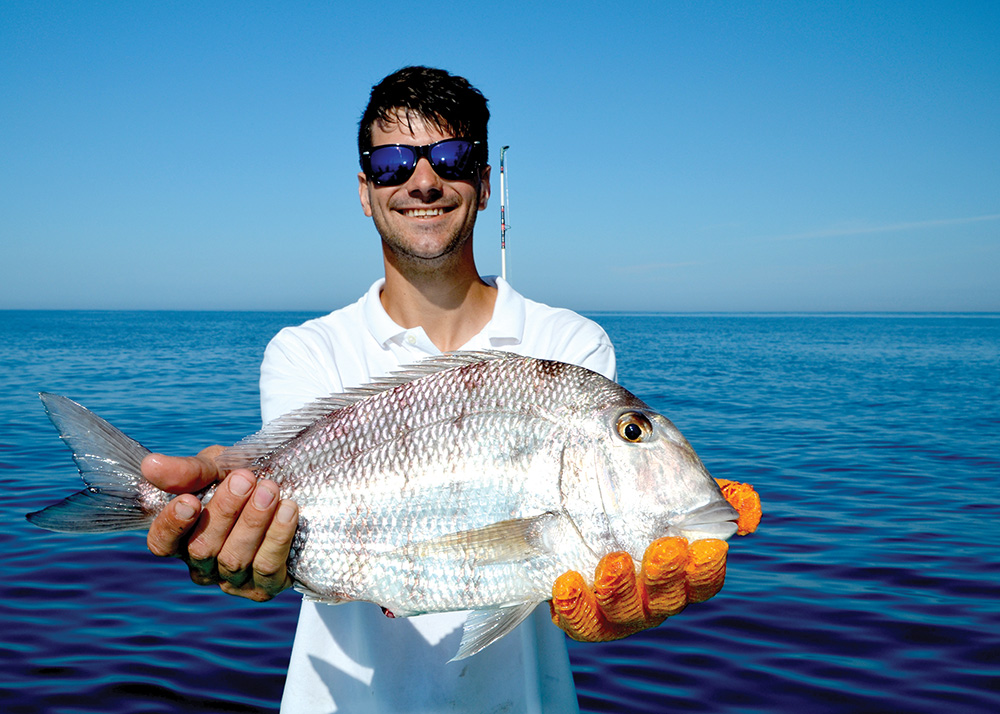
Growing up in South Louisiana, where people eat anything that doesn’t eat them first and some things that do, I tasted about every fish species found in the Gulf of Mexico or associated waters. Some I only tried once. Some I spit out about as fast as it hit my tongue.
But there’s a group based in Gulf Shores that wants people to try different species of fish, like jack crevalle. Large, hard-fighting sport fish that can challenge any fishing tackle with lightning runs and devastating strikes, jack crevalle seldom show up on dinner plates because most people believe that the bloody red flesh makes them unpalatable.
Chris Sherrill, the executive chef at Coastal restaurant (coastalgulfshores.com) in Gulf Shores, and Chandra Wright want to change that perception. They co-founded the Nuisance Underutilized Invasive Sustainable Available Noble Culinary Endeavors, or NUISANCE Group, to convince more people to eat underutilized species like jacks, bonito and others that most anglers consider “trash fish.”
“Our purpose is to raise awareness of flora and fauna that are a nuisance, underutilized or invasive, but sustainable and available through noble, culinary endeavors,” Wright says. “Sometimes, people look at us like we’re crazy when we offer them a piece of jack crevalle to eat, but we want to educate people on eating these fish and show them how to treat and prepare them. When prepared certain ways, many underutilized species can be quite tasty. Not too many years ago, most people considered redfish trash fish and didn’t eat them.”
If people eat more undesirable species like jacks, Sherrill and Wright say, that might take pressure off popular species like red snapper, grouper, redfish and speckled trout. Also, catching something different to bring home for the table could give recreational anglers, charter captains and even commercial fishermen more opportunities to keep different kinds of fish.
When they first started the group, Wright challenged Sherrill to invent a recipe that would make jack crevalle appetizing so they could serve it to a congressional staff delegation visiting the Alabama coast. A friend brought the chef a jack to prepare. When cleaning it, Chris noticed that the meat looks similar to beef, so he decided to treat it like beef. He cut the dark red bloodline out of the meat and marinated it.
“Jack crevalle has been our biggest surprise,” the chef admits. “I thought it was inedible, but the bloody red flesh looks like raw beef. If we cubed it, marinated it like steak and grilled it medium rare, it might taste like steak, I thought. We did and it came out beyond anyone’s expectations. We had to check to make sure nobody slipped in some prime rib, it was so good.”
Now, the chef experiments with many other less desirable fish. He frequently offers samples to his friends, usually without telling them the species until after they taste it. Some other underutilized species include stingrays, pinfish, scorpionfish, bearded brotula, gafftopsail catfish, porgies and others.
“I’m the guinea pig-in-chief,” Wright says. “I’m the one who gets to eat all the weird stuff Chris cooks to see how it tastes. Many less desirable fish are wasted. If people realized how good they are to eat if prepared properly, they might be more likely to keep some for the table.”
The group especially wants to promote lionfish as a delicacy. Native to the Pacific and Indian oceans, beautiful but dangerous lionfish invaded the Atlantic Ocean, Caribbean Sea and Gulf of Mexico a few years ago, probably as aquarium fish released into the wild. Highly prolific with no natural predators on this side of the world, lionfish multiplied and spread rapidly. Now, they displace or eat many native species.
“Lionfish are terribly voracious and prolific invasive species that eat just about anything and outcompete many native species for space and food,” Wright warns. “It’s a huge threat to native species in the Gulf of Mexico. We want to wipe them out here. They are delicious, but people need to handle them with care. They have 18 venomous spines that people need to avoid. The meat is not poisonous and is very white, flaky and delicious. People can fix it a variety of ways.”
Not everything makes the dinner table menu, despite the chef’s best efforts. For instance, he doesn’t like hardhead catfish, a well-known bait-stealing pest. I tried hardheads – once!
“I’m still on the edge with hardhead catfish,” Sherrill says. “When it’s ultra-fresh, it has some firmness to it, but it deteriorates rapidly. Another chef made some ceviche and cured hardhead catfish in lots of citrus juices to make it more firm. It’s pretty good with that, but it’s still probably my least favorite fish along with skipjack or ladyfish.”
Feel like eating something new? Some anglers bring their catches to the restaurant to ask Chef Chris to cook it for them. For more information on the NUISANCE Group, see its Facebook page at fb.com/NuisanceGroup or email [email protected].
John N. Felsher lives in Semmes, Ala. Contact him through Facebook.




